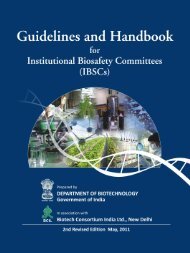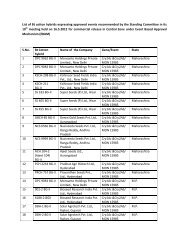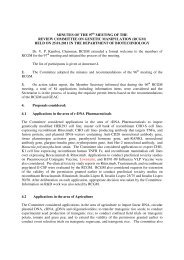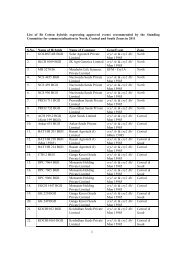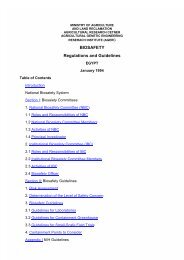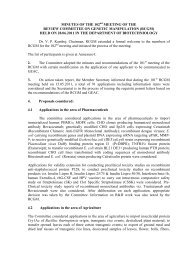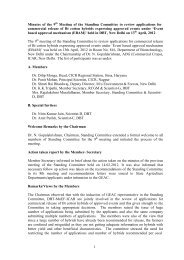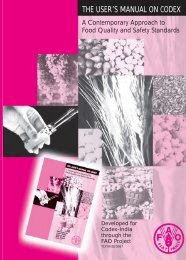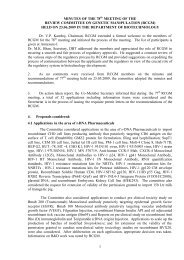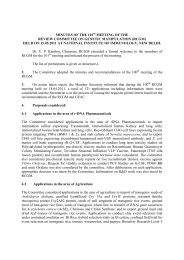Biosafety Guidelines For Research On Genetically Modified ...
Biosafety Guidelines For Research On Genetically Modified ...
Biosafety Guidelines For Research On Genetically Modified ...
Create successful ePaper yourself
Turn your PDF publications into a flip-book with our unique Google optimized e-Paper software.
4. Procedures for handling viruses that can potentially infect human cells<br />
(‘human infectious’ viruses)<br />
The primary hazard associated with the use of live recombinant viruses that have<br />
the capacity or that could potentially infect human cells lies on the type of the viruses<br />
and the nature of the introduced genetic sequences. Primate-infectious viruses shall<br />
be considered “potentially human-infectious”. <strong>For</strong> all human-infectious viruses<br />
handled in a class II biological safety cabinet, the primary hazard to the scientist is<br />
the possibility of infection by viruses through broken skin brought about by needles<br />
and other commonly used sharps such as pipettes. The potential danger to other<br />
laboratory personnel depends on the stability and infectivity of the virus in the<br />
extracellular environment and the nature of the introduced genetic material.<br />
<strong>For</strong> all human-infectious or potentially human-infectious viruses, the major<br />
requirement is for good virological and tissue culture practice on the part of the<br />
scientist with regard to the following precautions:<br />
(a) A facility of containment of level BSL2 or higher (as determined by the IBC and<br />
with reference to the <strong>Biosafety</strong> level detailed by the ATCC and CDC) will be<br />
required. All manipulations shall be conducted in a class II biological safety<br />
cabinet or equivalent. <strong>On</strong>ly one individual shall use the cabinet at any one time.<br />
(b) Laboratory gowns, gloves and face mask shall be worn during manipulations<br />
with recombinant human-infectious viruses.<br />
(c) Dishes and plates of cells containing human-infectious viruses shall be handled<br />
in larger plates (or inverted lids) to provide traps for accidental spills.<br />
(d) All pipettes, glassware and plasticware shall be decontaminated by submersion<br />
or by placing in polyethylene bags which should subsequently be sealed and<br />
autoclaved.<br />
(e) <strong>For</strong> viruses which are able to persist in the environment (e.g. adenovirus,<br />
vaccinia virus, hepatitis virus, papillomavirus), decontamination and bagging of<br />
waste should be done within the biosafety cabinet prior to removal and<br />
autoclaving. Care should be taken to ensure that the amount of material held in<br />
the biosafety cabinet is minimised, in order to avoid interference with the air flow<br />
in the cabinet.<br />
(f) Mouth pipetting is strictly prohibited.<br />
(g) Open flames that could interrupt the air-flow in the biosafety cabinet should be<br />
avoided.<br />
(h) The use of sharp instruments (sharps) such as syringe needles, glass pipettes,<br />
razors, scissors and surgical knives, wherever possible, should be avoided,<br />
since skin abrasions represent the most likely portal of entry to the body.<br />
Where the use of sharps is unavoidable, these instruments shall be placed in<br />
separate biological disposal receptacles and sterilized before disposal.<br />
(i) Tissue cultures infected with human-infectious or potentially human-infectious<br />
viruses shall be kept in specially dedicated incubators.<br />
(j) Likewise, frozen stocks of human-infectious or potentially human-infectious<br />
viruses should be kept in specially designated and clearly marked liquid nitrogen<br />
Appendix - Page 12




